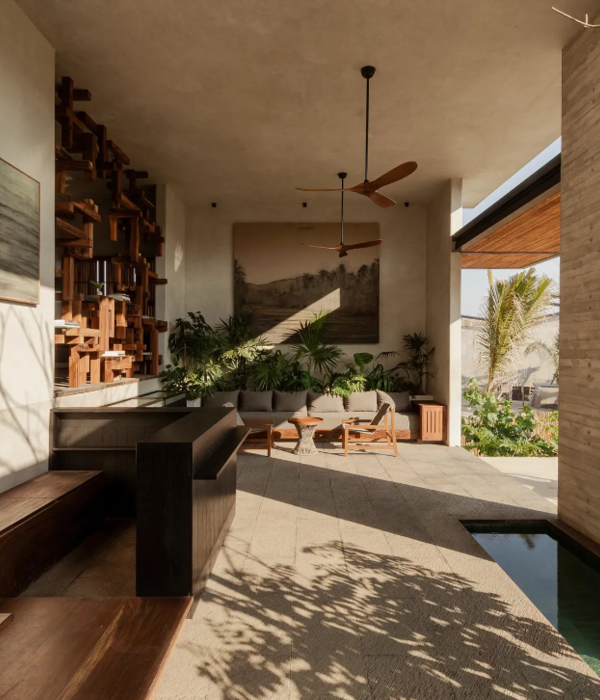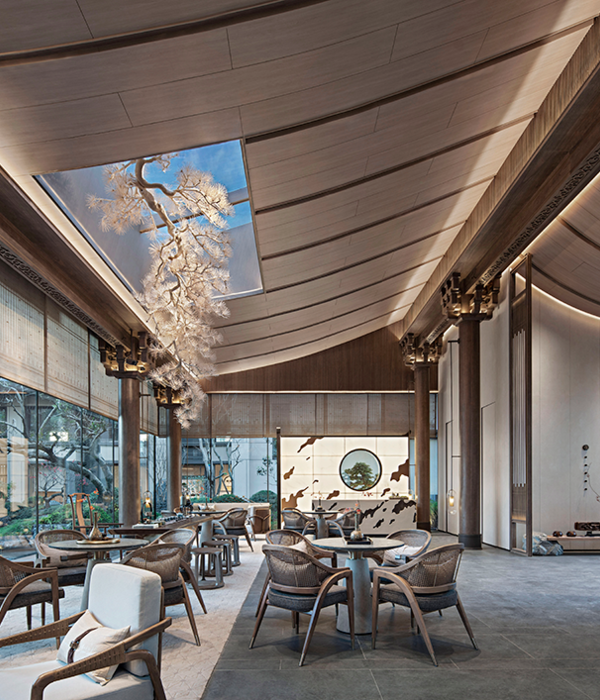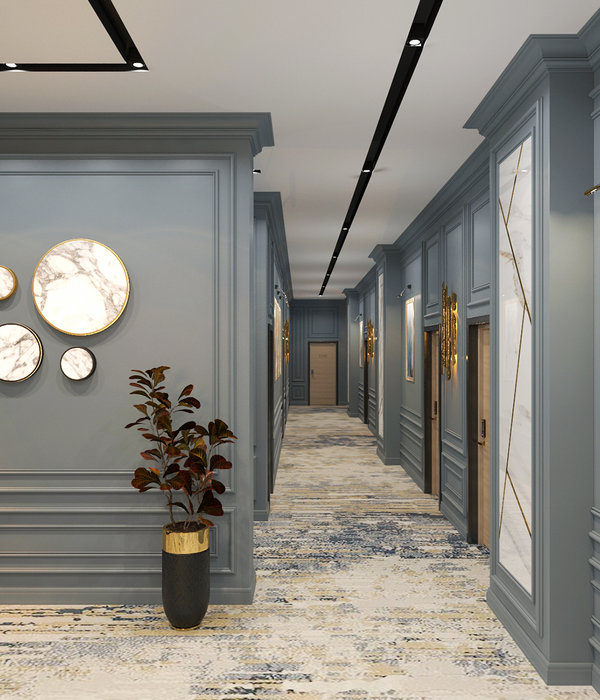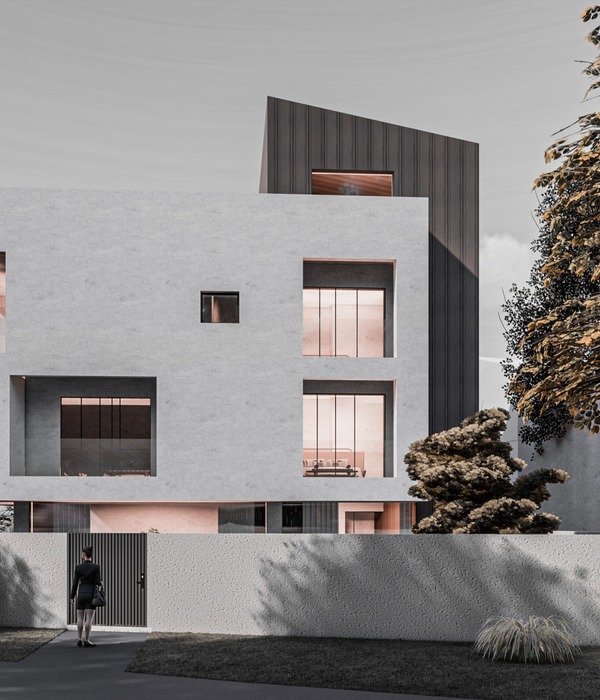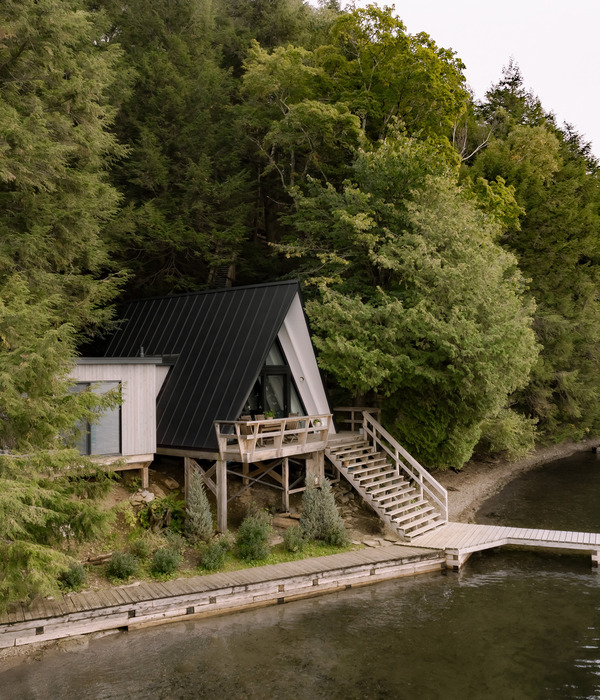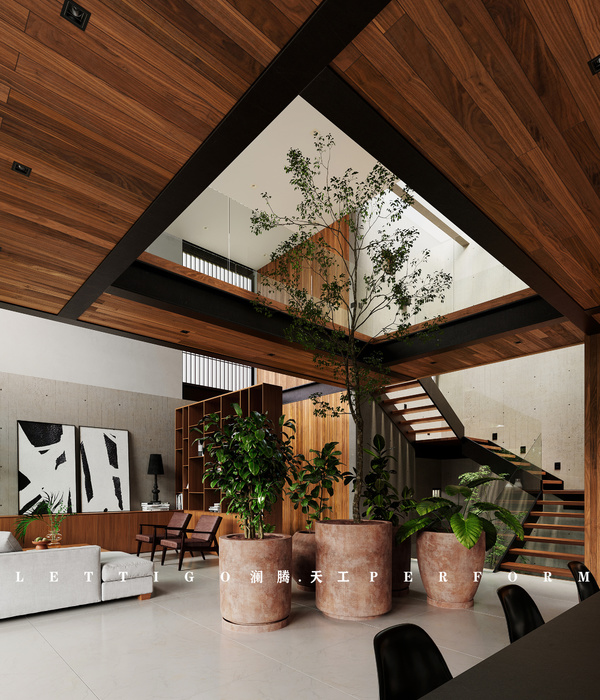Architect:Arquitectura en Movimiento Workshop
Location:Tulum, Mexico; | ;
Category:Hotels;Restaurants;Wellness Centres
The project is located in the Sian Ka'an natural reserve, one of the last remaining carbon-capturing forests and the second largest coral reef in the world. The reserve facilitates eco-tourism and environmental thinking along a section of the Caribbean coast within a Mayan area of Mexico.
The site for this project is divided in two, one part having views to the sea and the other being on the shore of a lagoon. This situation offers two prospects within the one complex, separated only by a road.
The client's concept is about inviting the users to take a unique, introspective journey where they can experience, as the name suggests, an awakening to a new, regenerated self, whereby the experience of lodging becomes integrated into the natural environment. The complex promotes healthy eating and local gastronomy as well as activities that will strenghten the mind, body and spirit. It encourages a connection with nature, the community and with the visitors themselves and fosters consciousness in tourism.
The complex comprises 12 Tents (cocoon-shaped) modules which function as living spaces, organised around a very simple plan: living and sleeping areas plus facilities. The geometry of this object is realised by a series of bamboo curves revolving around a central axis in the manner of a spinning top. At the main level, that is, 3 metres above ground, its diameter is 5 metres, while the base at ground level has a diameter of 1 metre. On the upper level and above the mezzanine, rainwater is collected and stored for household consumption, this reduces the demand for drinking water, difficult to supply to this area. These units are connected by means of vertical elements and suspension bridges.
The cocoon or tent has been conceptualised as a prototype, a repeatable object that can be installed anywhere. It can, if required, be transferred to another place without leaving an imprint on the land.
The amenities programme is complemented by several elements which guide the interpretation of the project: the form of the reception area is reminiscent of a hummingbird nest, the restaurant's is a sea snail, while the structure that contains the multiple use room emulates a tortoise shell and the pool bears the form and texture of an open bird nest. The facilities are resolved within small geometrical modules.
Power is supplied by means of wind turbines, wastewater treatment plants and solar panels. The system achieves a complete water cycle with no disposal into the aquifer. Waste management envisages crops growing on the land and protection of mangrove swamps.
▼项目更多图片
{{item.text_origin}}


